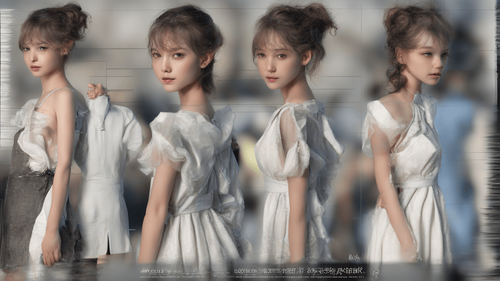
Introduction
In the age of rapid technological advancements, artificial intelligence (AI) has taken center stage in transforming various industries. One remarkable area where AI showcases its creative prowess is in drawing pictures. The fusion of human-like creativity with the computational power of machines has led to the emergence of AI-generated art, a field that continues to captivate artists, researchers, and enthusiasts worldwide. This article delves into the captivating world of AI that draws pictures, shedding light on its mechanics, applications, and the intriguing fusion of technology and creativity.
Understanding AI's Artistic Abilities
AI Draws Picture: Breaking Down the Process
The process of AI drawing pictures involves intricate algorithms and neural networks that simulate human artistic abilities. Through a combination of deep learning techniques, generative adversarial networks (GANs), and convolutional neural networks (CNNs), AI is able to analyze existing art, learn from it, and then create original pieces based on this learned knowledge. This process mimics human creativity by understanding patterns, styles, and even emotions conveyed in art.
Applications of AI-Generated Art
AI-Driven Creativity in Various Industries
The applications of AI-generated art span across a multitude of industries, showcasing its versatility and potential impact:
- Entertainment Industry: AI-drawn illustrations, characters, and scenes are revolutionizing the entertainment landscape. Animation studios are leveraging AI to enhance their creative processes and produce stunning visuals.
- Advertising and Marketing: AI-generated visuals are being used to create eye-catching advertisements that resonate with target audiences. This allows for personalization and innovation in marketing campaigns.
- Interior Design: AI-created art pieces are finding their way into interior design, offering unique and customizable decor options for homes and commercial spaces.
- Gaming: AI is used to create intricate and visually appealing in-game graphics, landscapes, and character designs, enriching the gaming experience.
- Fashion: Some designers are experimenting with AI-generated patterns and designs, pushing the boundaries of traditional fashion aesthetics.
- Education: AI-drawn educational visuals aid in explaining complex concepts, making learning more engaging and accessible.
The Benefits of AI-Generated Art
Enhancing Creativity and Efficiency
AI Draws Picture: A Catalyst for Innovation
The synergy between AI and art offers several notable benefits:
- Unlimited Creativity: AI can generate an infinite variety of artistic styles, enabling artists and designers to explore new horizons.
- Time Efficiency: AI accelerates the creation process, generating art at a much faster pace than traditional methods.
- Collaboration Opportunities: Artists can collaborate with AI, leveraging its unique style to create innovative hybrid artworks.
- Preservation and Restoration: AI can restore and preserve old artworks by filling in missing details or revitalizing faded colors.
Challenges and Controversies
Addressing Ethical and Aesthetic Concerns
While the potential of AI in art is exciting, it also raises important questions:
- Originality vs. Replication: Does AI-generated art truly possess originality, or is it merely replicating existing styles?
- Human Involvement: Some argue that true art requires human emotions and experiences, which AI lacks.
- Copyright and Ownership: Determining the ownership and rights of AI-generated artworks poses legal and ethical challenges.
FAQs
How Does AI Learn to Draw?
AI learns to draw through neural networks that analyze existing artworks and patterns, gradually improving its skills through iterations.
Can AI Replace Human Artists?
AI can produce impressive art, but the emotional depth and human experience in art creation remain unique to human artists.
Is AI-Generated Art Valuable?
AI-generated art is gaining value in the art market, with collectors and enthusiasts intrigued by its blend of technology and creativity.
What is Style Transfer in AI Art?
Style transfer involves applying the artistic style of one image to another, creating a fusion of styles that AI excels at.
Can AI Create Original Art Styles?
Yes, AI can create original art styles by amalgamating various learned patterns and characteristics from existing artworks.
How Can Artists Collaborate with AI?
Artists can collaborate with AI by providing initial input or guidance and allowing the AI to contribute its own creative elements.
Conclusion
AI draws picture with astonishing accuracy and creativity, opening doors to uncharted artistic territories. As technology continues to evolve, the boundaries between human creativity and machine-generated art become increasingly blurred. While challenges and controversies persist, there's no denying that AI is reshaping the art landscape. From entertainment to education, AI-generated art has the potential to redefine industries, enrich our creative experiences, and inspire artists to embark on new creative journeys. As we navigate this exciting intersection of art and technology, the journey of AI drawing pictures promises to be a captivating and transformative one.
Remember, AI is not just about automation; it's about expanding the realms of imagination and pushing the boundaries of what's creatively possible. So, next time you admire an AI-drawn masterpiece, remember that it's the result of a harmonious duet between human ingenuity and the limitless capabilities of artificial intelligence.